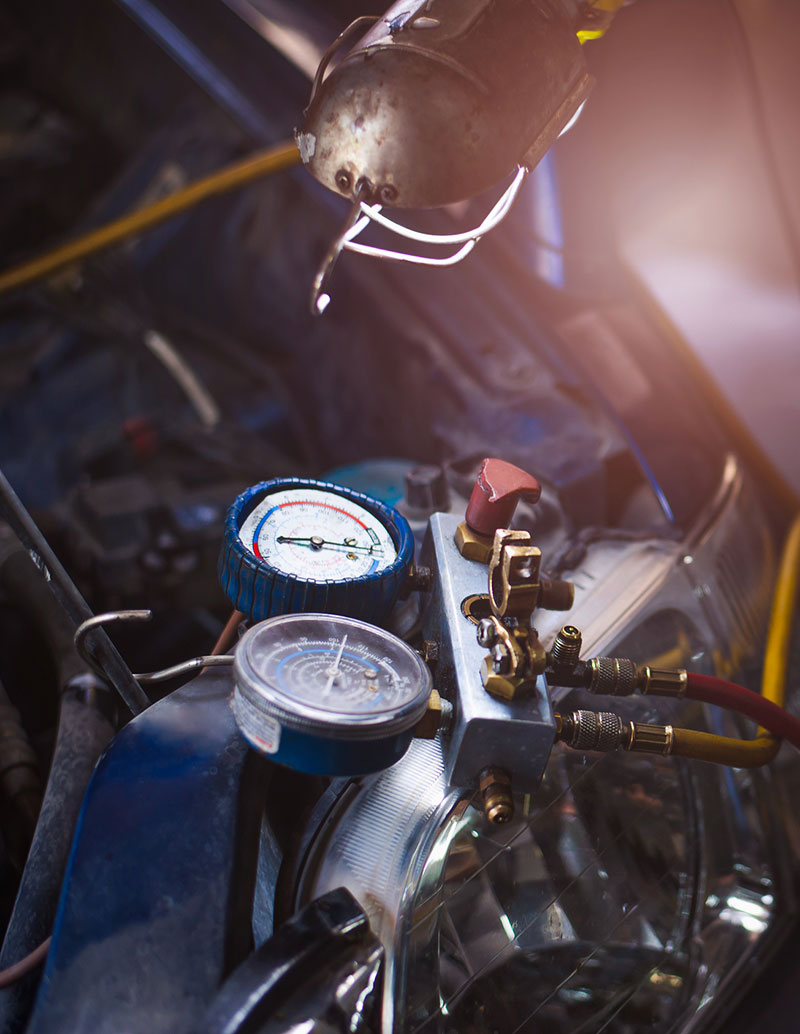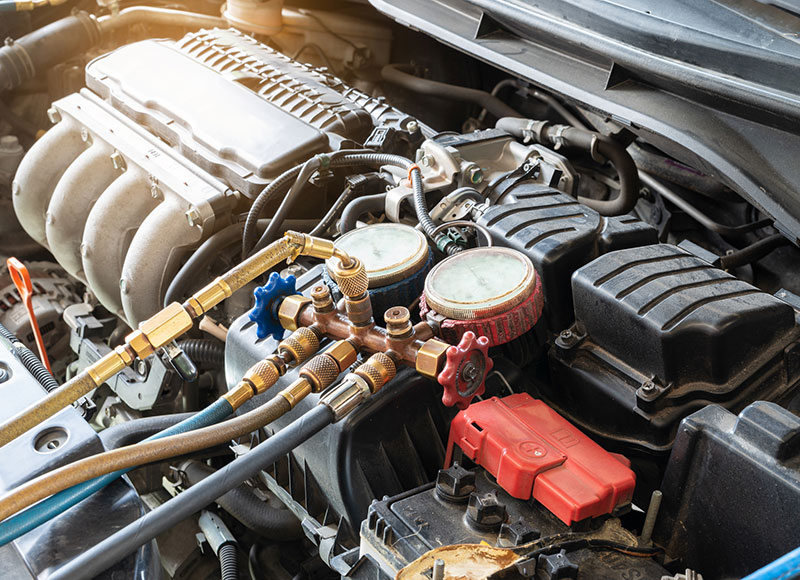AC Service

The air conditioning unit in your vehicle operates similarly to a refrigerator. Your vehicle’s air conditioning unit is designed to move heat from the inside of your car to outside of it.
Your vehicle’s air conditioning unit has six major components:
- The refrigerant
- The compressor
- Your vehicle’s condenser
- The expansion valve
- Your vehicle’s evaporator
- The receiver or dryer
How Does Your Vehicle's Air Conditioning System Works?
When you start your vehicle’s air conditioning system, the compressor works by putting the refrigerant under pressure, sending it to the condensing coils, which are generally in front of your vehicle’s radiator. The condenser expels hot air to outside the car, cooling the air within the vehicle. When this happens, the refrigerant is cooled, and it changes form a gas to a liquid, which then passes through the expansion valve and to the evaporator.
Once the evaporator receives the liquid-state refrigerant, it loses pressure and cools the remaining liquid. The vehicle’s blower moves air across the evaporator and into the vehicle’s interior. If you keep your air conditioning unit turned on, the refrigerant goes through this cycle continuously.



For A/C Service, Bring Your Vehicle to Marshall's Garage Inc.
If any of these components is damaged, it can turn your cool car into a furnace during the summer months. Your vehicle’s air conditioning issue could be as simple as topping off refrigerant to replacing a valve. When your air conditioning unit is not working as it should, bring your vehicle to Marshall's Garage Inc.. One of our trained air conditioning specialists will inspect your car’s air conditioner, all lines, the evaporator and the compressor for leaks and wear.
